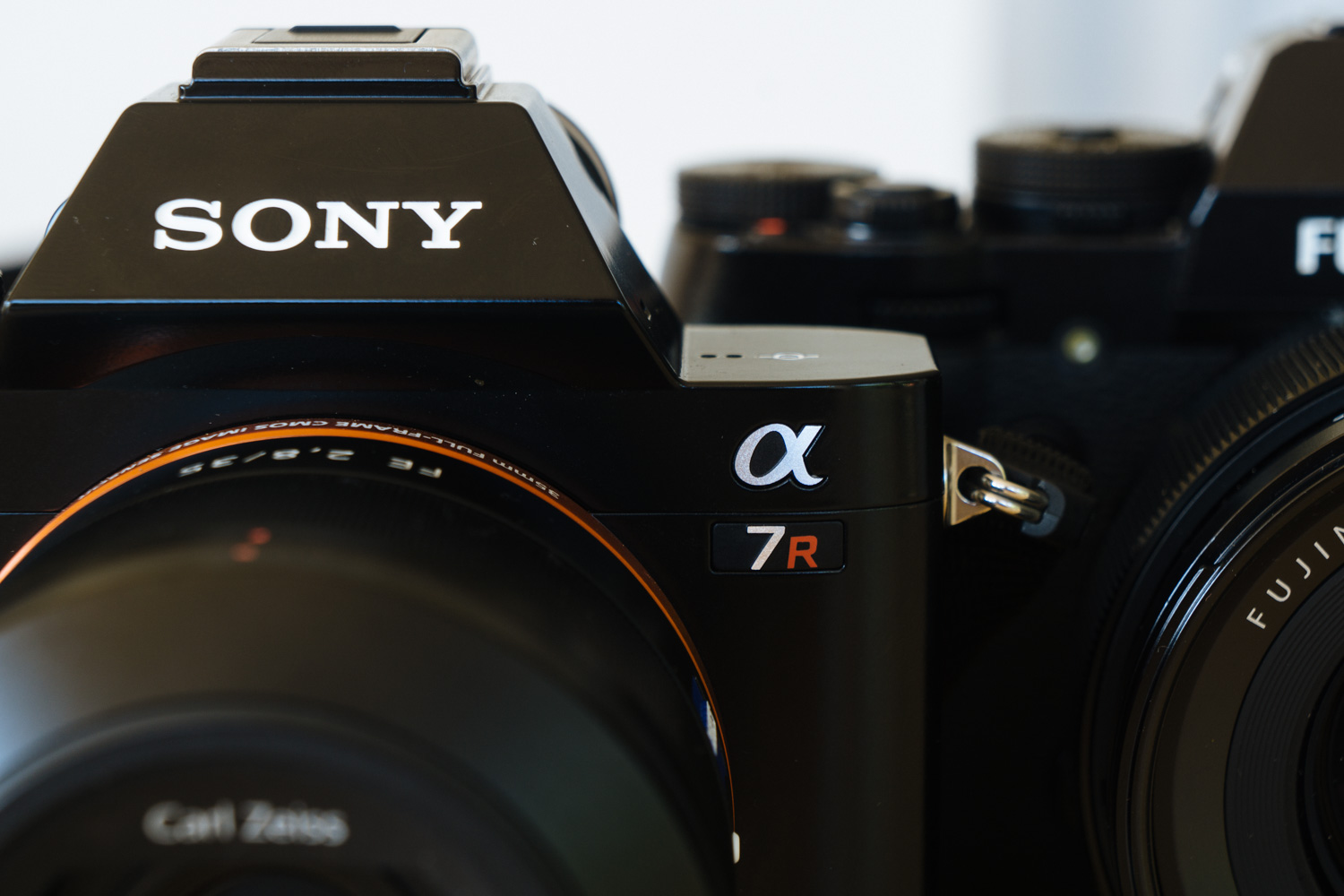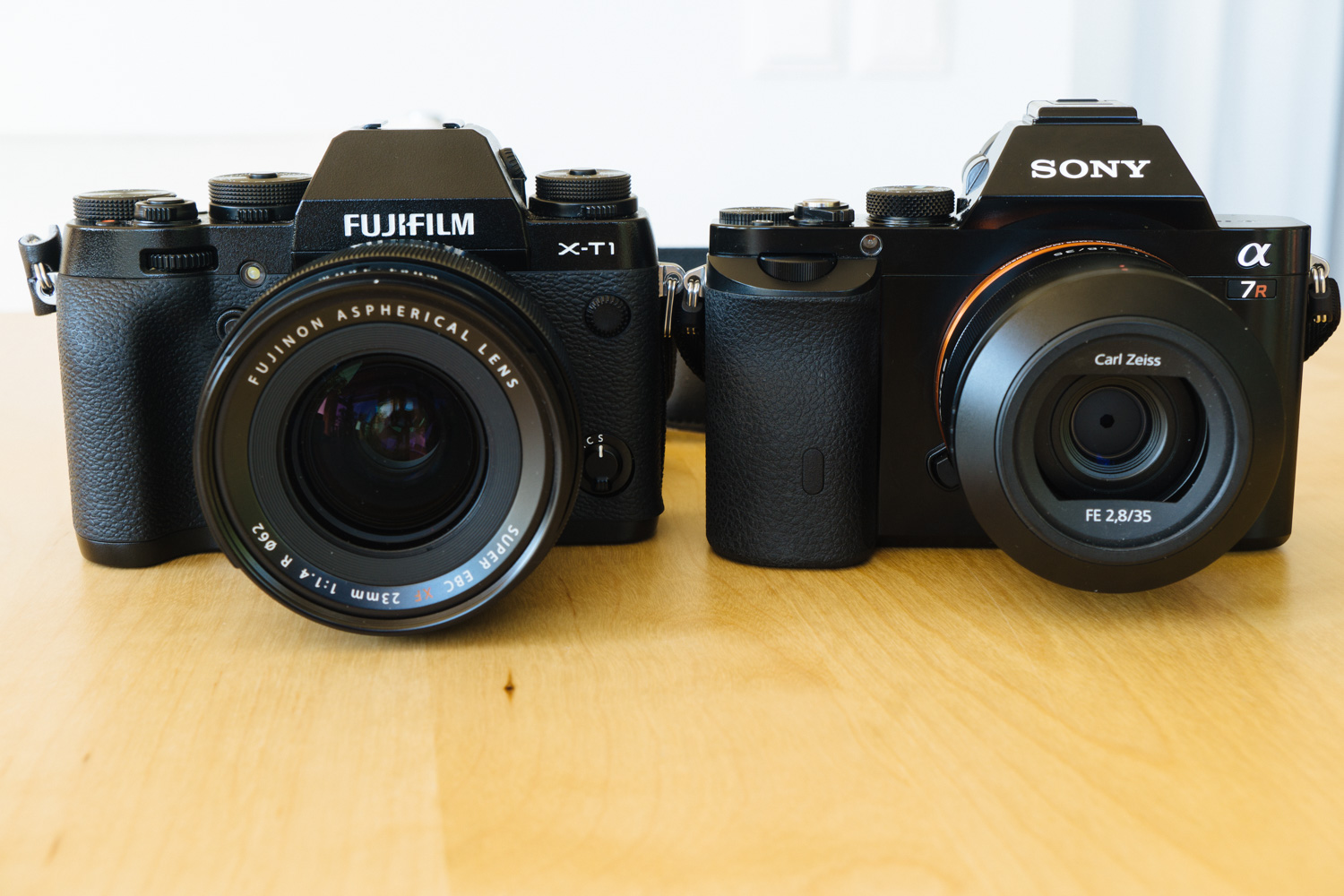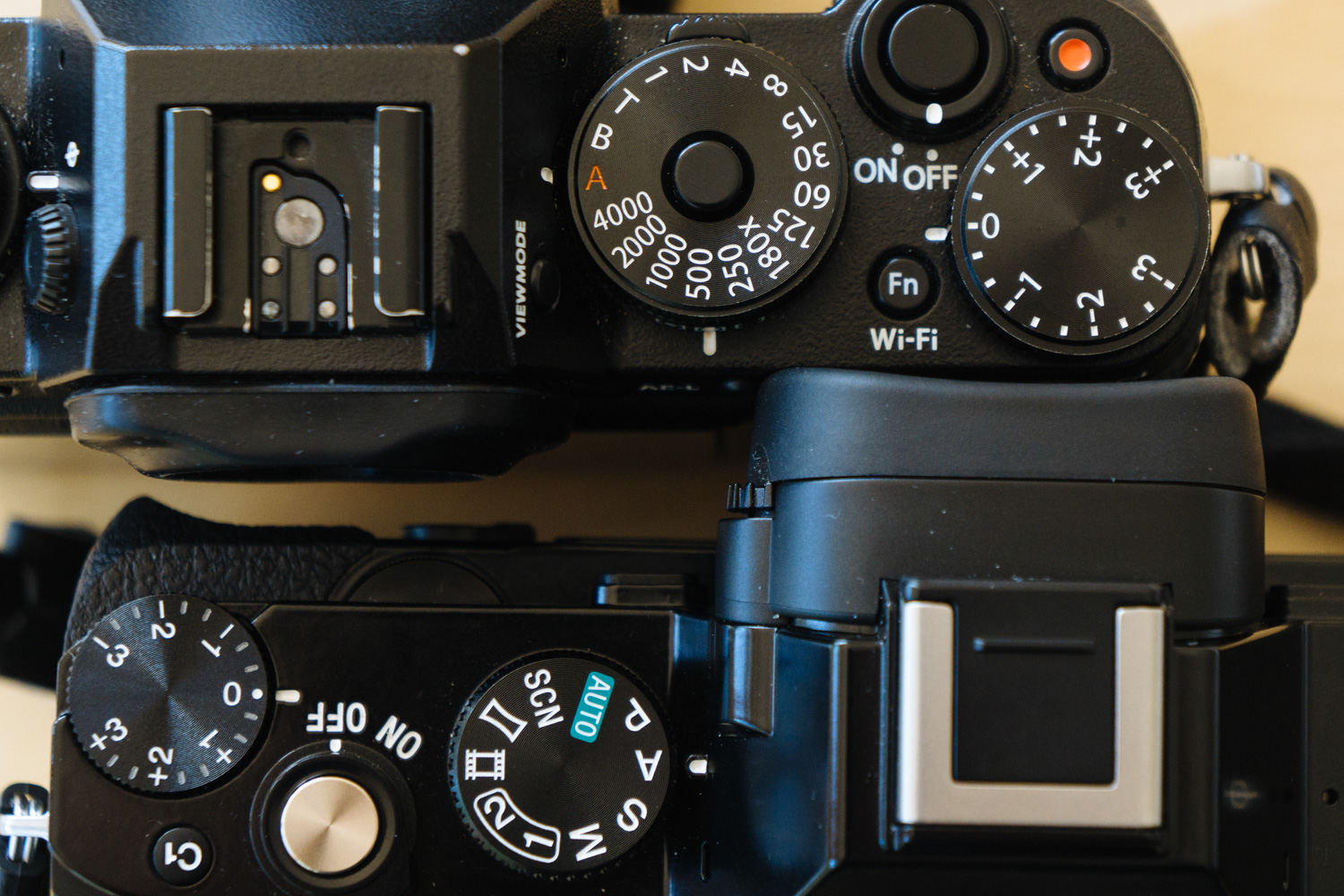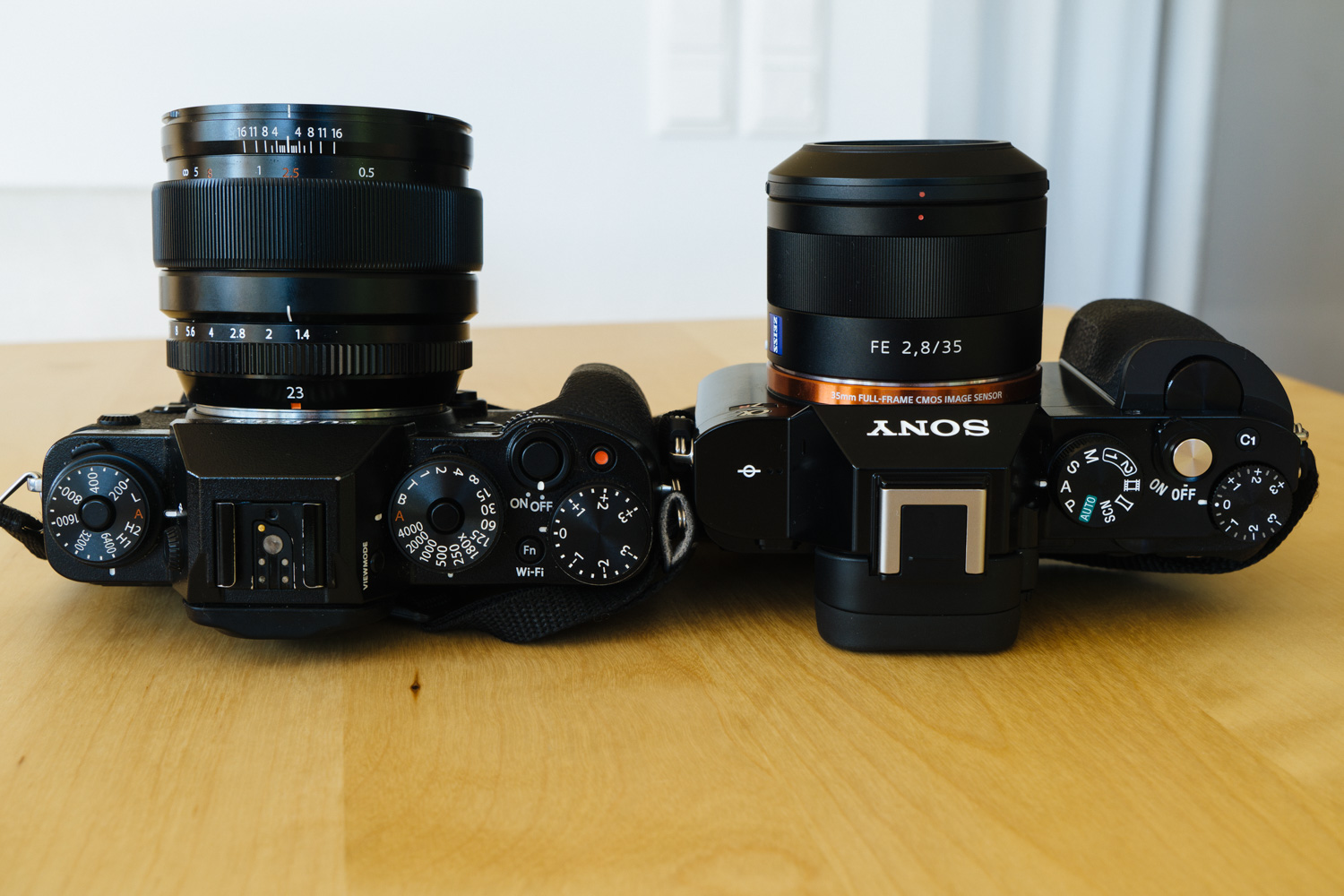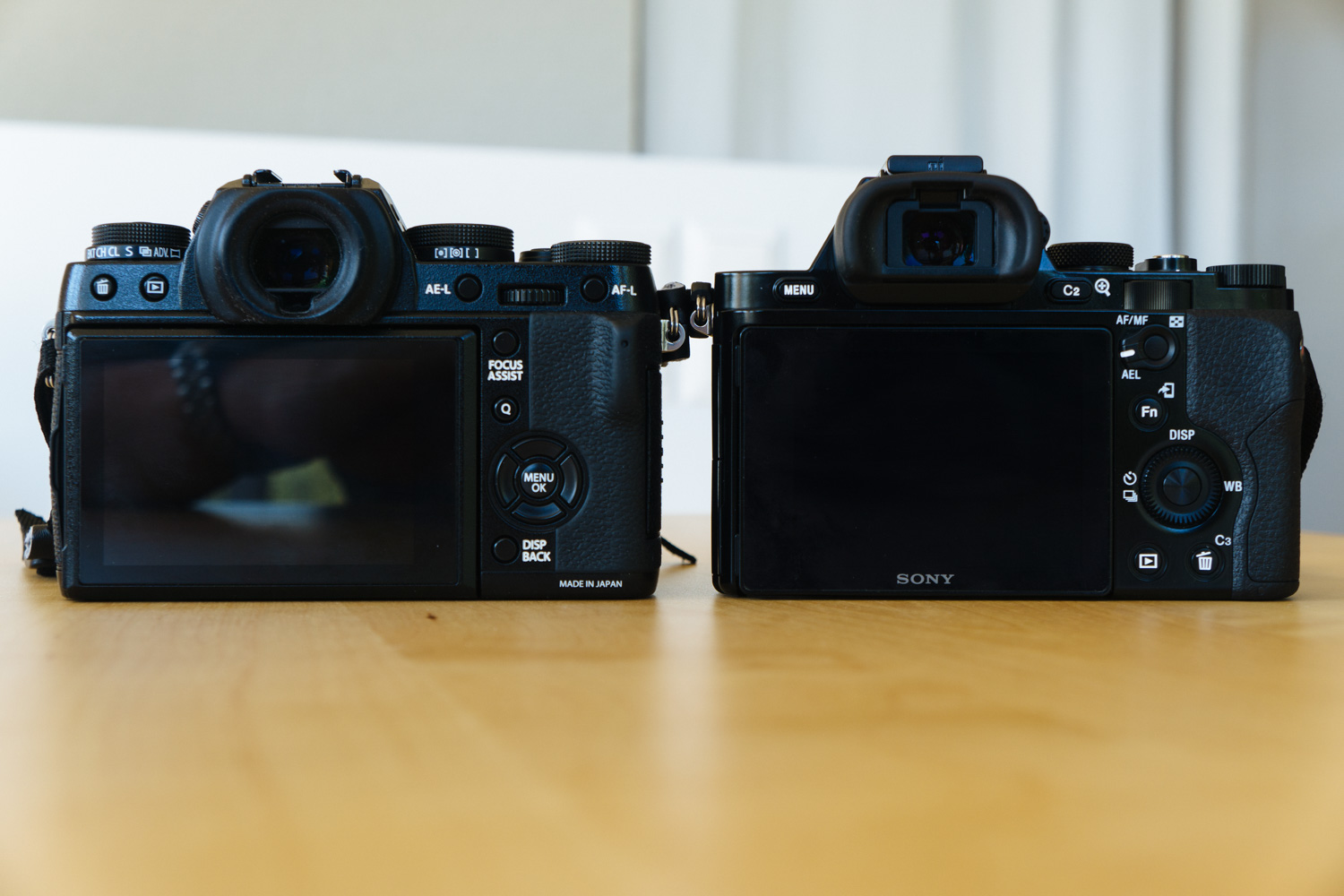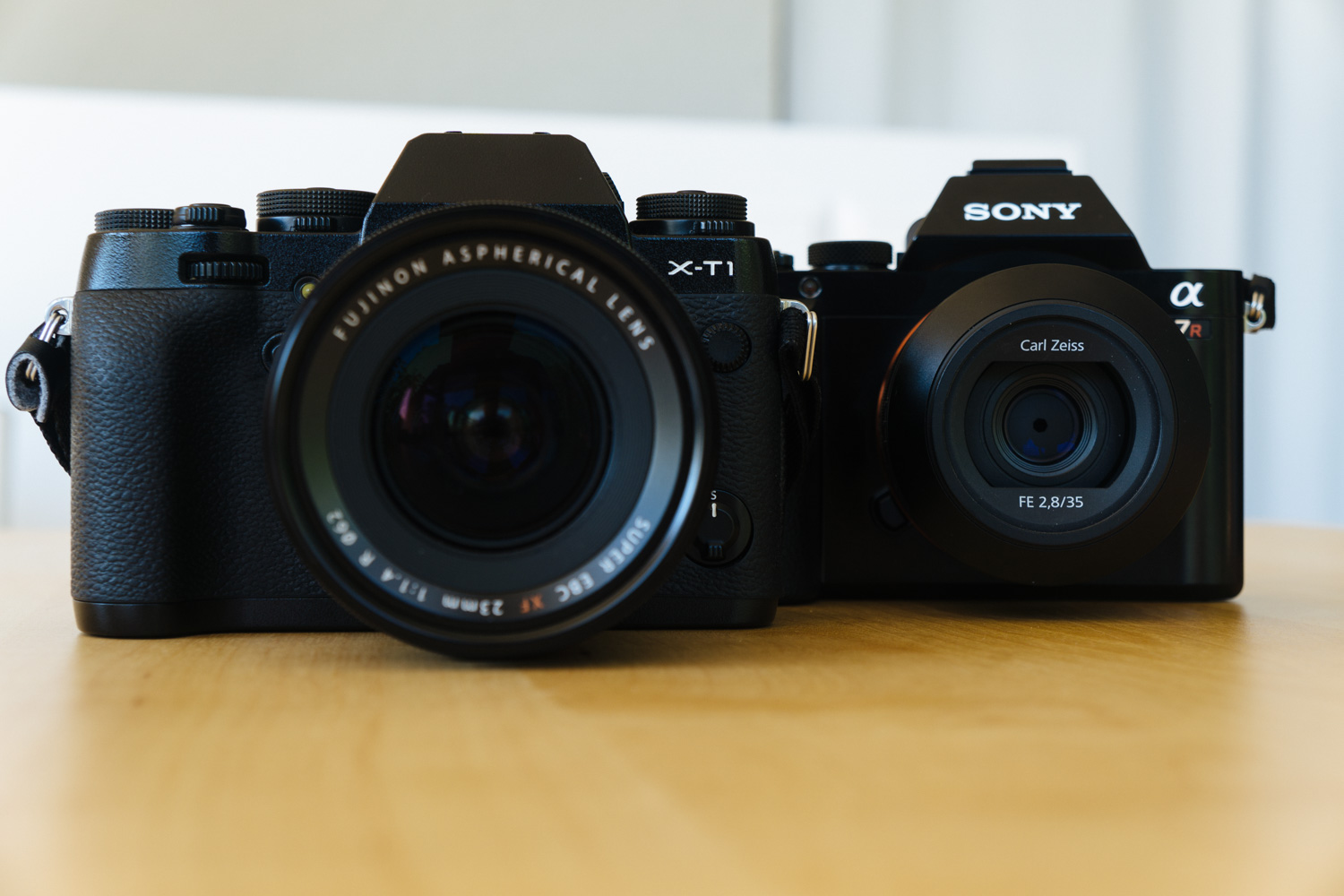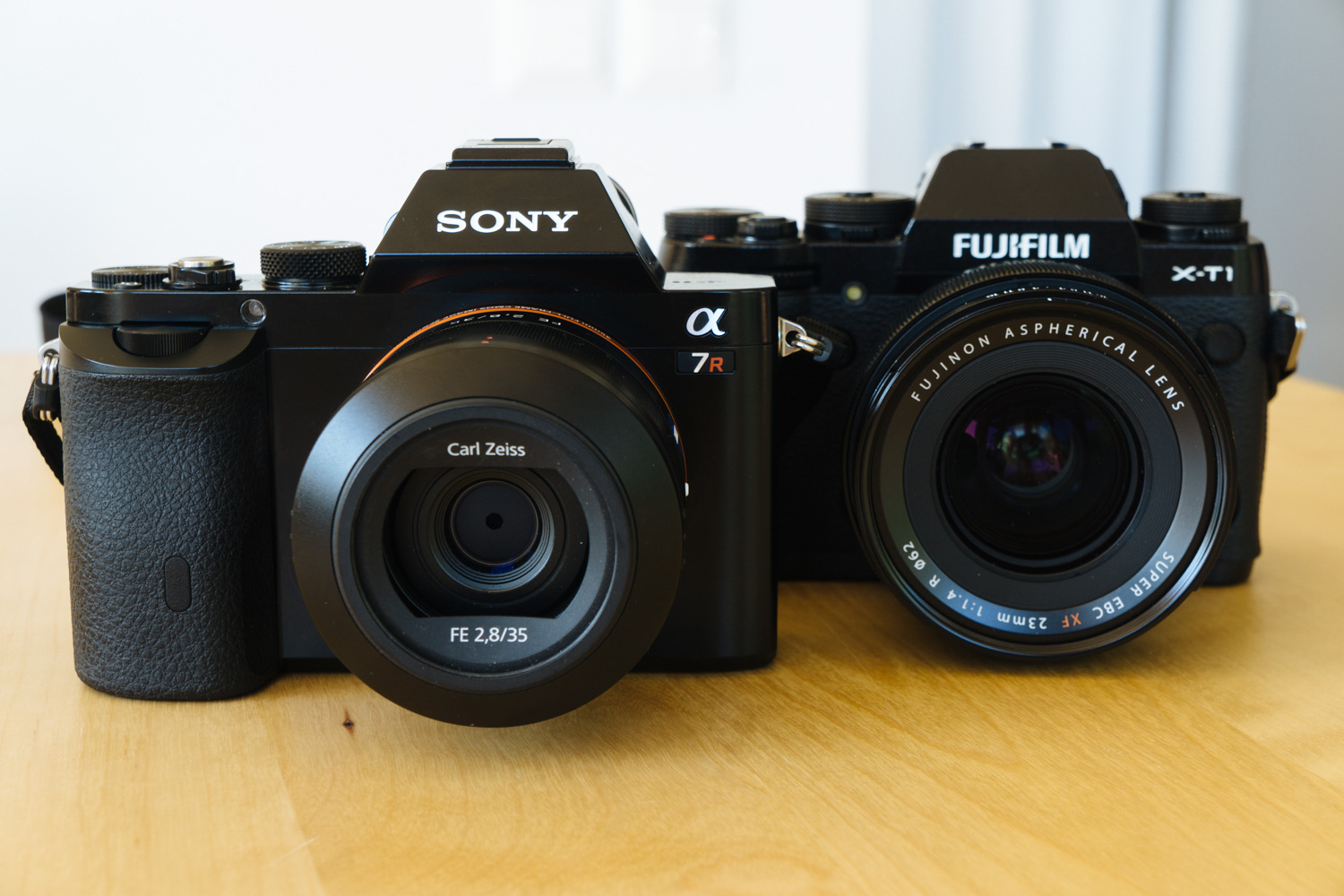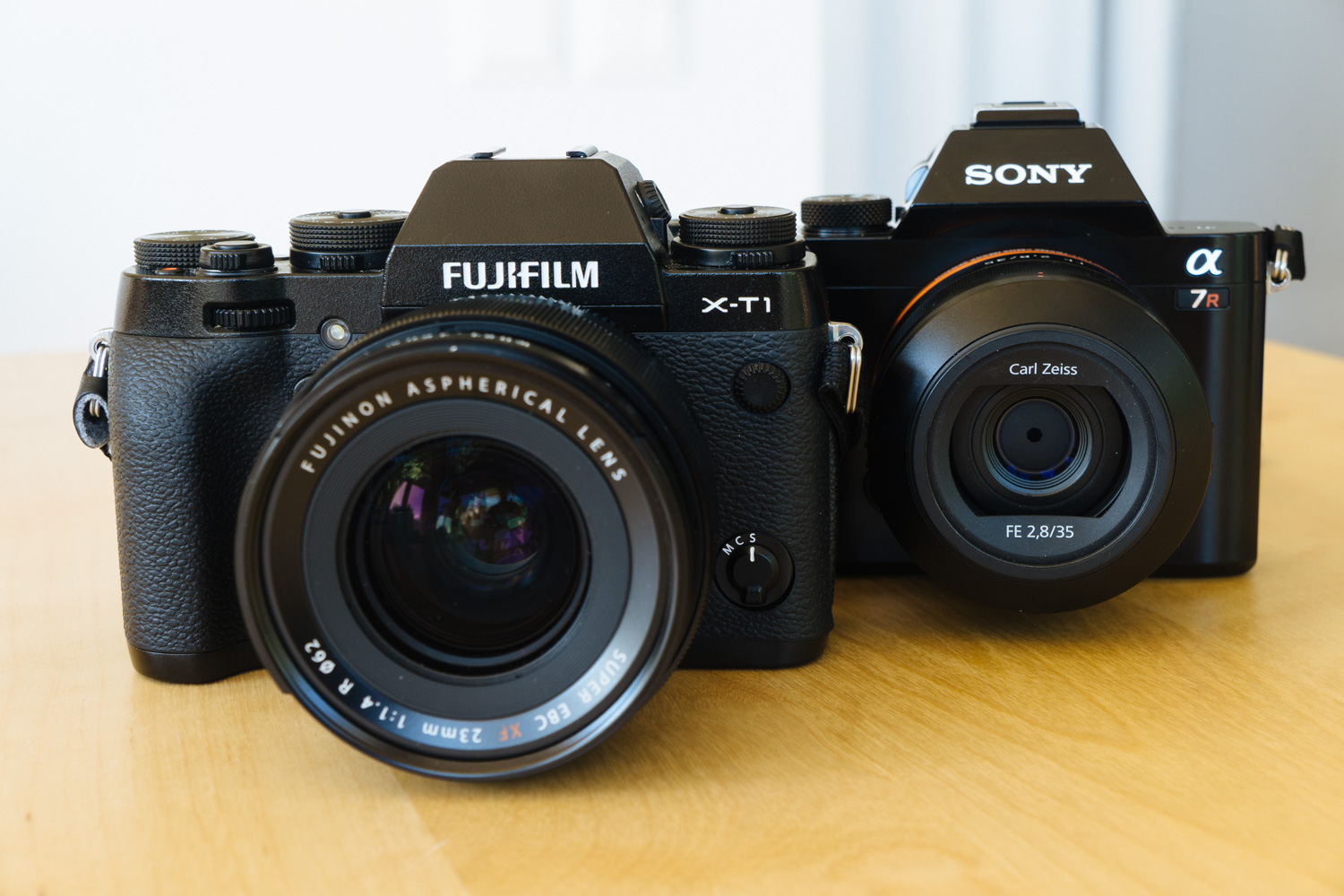A couple of years ago life was simple. At least regarding photography. You were either a Canon guy or a Nikon guy. Because of the heavy investment in lenses very few people ever switched systems.
I did after my Nikon gear was stolen and I had to start from scratch. At that time there was no full frame DSLR from Nikon so I got a Canon 5D. It was not just the sensor format but also Canons f4 IS lenses that made me switch. I never regretted my decision even though I had some handling issues at the beginning. Meanwhile both have full frame cameras, both have f4 IS zooms. Nikon learned that ultrasonic AF motors are nicer than the old screw drivers and Canon learned to make excellent wide angle lenses. Today both systems are essentially the same and there is no real reason to switch.
I doubt that there is a lot of switching in between Canon and Nikon today but there are a lot of people who switch from DSLR to mirrorless cameras. I did for the majority of my shots. If I look at the statistics on Lightroom my main camera today is a Fuji X-T1. Recently I got a Sony A7R as a second body for my Canon full frame lenses. Time to compare the two best options today to go mirrorless: the Fuji X and the Sony A7.
1. Cameras:
The Fuji system is a little older. It started with the Fuji X-Pro1. I radical new camera and new system from Fuji who pulled out of the DSLR market. Now it compromises a couple of cameras that are basically all based on the same 16MP APS-C sensor. The main differentiator in between the Fuji models is the feature set.
What is so special about Fuji cameras? I think it is the deep understanding of Fuji of what makes a camera a joy to use. I preferred the look of the X-Pro1 but the X-T1 is even better regarding handling and EVF. Here is why photographers love Fuji: (this list applies to all Fuji X cameras except their entry level cameras like the X-M and the X-A):
- aperture ring on the lens (on most XF lenses)
- shutter speed dial
- exposure compensation dail
- ISO dial (only on X-T1)
You can shoot the X-T1 without digging into menus or playing around with ugly and small 4 way controllers on the back of the camera. You can see all settings of the camera without looking at the screen. This creates a shooting experience that you can’t get from any other mirrorless camera or DSLR.
The Sony A system is rather young but there are 5 cameras: Sony A7, A7R, A7S, A7II and the recently announced A7RII. Their cameras have almost the same body and feature set (mkII versions offer IBIS and improved ergonomics) but have 3 different sensor groups: a 24MP sensor, a 36/42MP sensor without low pass filter for ultimate sharpness and a 12MP! full frame sensor for excellent ultra high ISO (for ISO12.800 and beyond).
On paper the Sony clearly wins. Their 24MP offer more details than Fuji X and their 36MP/42MP are in a different class. If you are shooting in the dark the A7S offers far superior high ISO. It’s a astrophotographers or concert shooters dream camera.
But there is more that makes a great camera. It is not just the sensor. The shooting experience plays an important part too. The Fuji X-T1 just disappears when I shoot it. Everything feels natural. I never have to use the menu. The Sony is different. There is no aperture ring, no ISO dial and no shutter speed dial. Shooting feels less natural and it involves the screen and the small 4 way controller on the back of the camera. There is no need to dig into menus most of the time if you set it up clever but it is just not like shooting with the Fuji. For such a camera a program wheel makes no sense. I shoot in A- Mode or M-Mode most of the time and I assume most people who buy such a camera do the same. A program dial is nothing but a waste of space.
Regarding cameras to me it is a tie. Sony offers the better sensors and Fuji the better bodies. I love the results of my Fuji X-T1 but I think it is about time to put a new sensor in their cameras. Sony should take a closer look to Fuji and Leica to get some inspiration for camera design.
2. Lenses:
Sony never was famous for their lenses. As one of the early adopters to the NEX system I know how it feels when your super camera has no super lenses. This is also what I feared for the A7 system when I wrote about my first look at the A7R in December 2013.
The good news is that this time Sony seems to be more serious and there is also support from Zeiss to increase the number of lenses for the young system. Sony covered the basics with f4 IS zooms: 16-35, 24-70 and 70-200 and also offers now a couple of primes. Less than Fuji but not bad. And there is Zeiss that just started to offer lenses to the A7 system too.
Fuji started with a couple of primes first and added the zooms later. At the moment the also offer the three important zooms but they made them slightly different. They have a stabilized 10-24mm f4 lens, a big and fat 16-55mm f2.8 and a surprisingly big and heavy 50-140mm in f2.8 with IS. In order to keep the weight down I would have preferred f4 versions of those lenses. There is the option to get the kit zoom instead but it starts at 18mm and doesn’t offer a constant aperture just like the cheaper tele zoom lenses. In order to keep the system light I think the kit zoom and the slower tele zooms are still the better options.
Maybe you already guessed it: I’m not a particular fan of the Fuji f2.8 zooms. They are good but they are not exciting for a travel photographer. Wedding or portrait photographers should be happy though.
The primes are were Fuji shines. The cover almost everything you can think of especially on the wider end and the quality is impressive. My personal favorites are the 14mm f2.8, the 23mm f1.4 and the 35mm f1.4. The 56mm 1.2 is of course fantastic too but it is rather big and heavy. Same is true for the 16mm f1.4. The 27mm f2.8 pancake on the other hand is a nice addition if you really want to go light.
Regarding lenses I still give a slight advantage to Fuji because of their primes. For me the fantastic Fuji XF14/2.8 R is reason enough to shoot Fuji. Regarding zooms I prefer Sony’s approach to stick at f4 and to have IS in all lenses but again Fuji offers more choice and maybe slightly better lenses optically (I wrote maybe because this is not based on personal experience (regarding the Sony lenses of course)).
Conclusion:
Two similar looking camera systems that have surprisingly little in common. One is a fantastic sensor in a good but not exactly exciting box. The other one is a very good sensor that finally starts to feel a little dated in one of the best and most enjoyable camera bodies.
Regarding lenses they are getting closer but there are some differences you need to check out before you decide. Camera bodies are also a very personal thing. I love the Fuji X-T1 for all its dials and knobs. Others might find it intimidating. You need to try and handle both before you decide on one system.
If you just look at the sensor currently Sony clearly wins and it will always be the case because the sensor is two times the size of the one in the Fuji and a bigger sensor will always be better. The sharpness and the detail level of the files of my Sony A7R are outstanding and my Fuji X-T1 can’t come even close to that. That being said I think that in the real world the Fuji files are easily good enough to create large prints and photo books. You need to zoom in at 1:1 on a high res 27 inch display to appreciate the difference. But even though the resolution that the Sony A7 R offers might not be what you need it is still fun to look at the files coming from such a camera.
I think it depends on your photography. If you are into landscape photography one of the high res Sony cameras, the A7R or the A7R mkII make a lot of sense. If you are into street and travel photography the Fuji might be the better option because of handling and because it is still smaller and lighter. But not by much! The Sony A7R with the 35/2.8 from Zeiss is much lighter than the Fuji X-T1 with the 23/1.4. The later gives you shallower depth of field but I would love if Fuji would make a f2.0 version of the 23mm.
Update (25.06.2016):
Since I wrote those lines 9 months have passed. In digital photography that’s still a lot of time even though progress has slowed down. I upgraded to the X Pro-2 that finally brought a new sensor and a new shooting experience for Fuji shooters regarding responsiveness. And there is this new, wonderful EVF that is bright enough for shooting in bright sunlight. And of course the little joystick to select the AF area. Beside all that the shutter now goes to 1/8000s and sounds great.
But back to the sensor: It is a big step and now Fuji is on par with the 24MP sensors in Sony and Nikon cameras. What puts Fuji ahead are there excellent lenses. Sony might still have a slight advantage in dynamic range but I don’t expect that sharpness or image detail is any better. The A7RII is a different story but of course the difference now is much smaller than it was compared to the X-T1.
And guess what: Fuji will make a 23/2! But my new star in the Fuji lens collection is the fantastic Fuji XF 16/1.4 WR. What a lens!
I also updated the personal note below.
Personal note:
If I have to choose just one I would keep the Fuji mainly because of system weight, my preferred photographic subjects and shooting experience. But I start to consider to replace my Canon full frame gear with Sony. I love Canon’s new lenses. They are just fantastic! The 16-35/4 IS, the 24-70/2.8 II and the 70-200/2.8 IS II but they are big and heavy. It is not nice to lift them around on longer hikes or to run into problems at the airport every time I travel because my cabin luggage is too heavy. When I returned to Austria from my US trip I put the 70-200 in my check in bag! I never did that before but airlines have become much more rigid regarding cabin luggage.
I also left the 70-200 and even the 24-70 in the car for longer hikes. What’s the use of a lens that you leave behind? I think it is better to compromise a little on quality and speed but have the gear with you when you need it.
Luckily I got plenty of time to make up my mind. I just returned from my big vacation and the next one will not before summer/autumn 2016. If I would go to Alaska or if I would visit Canada again I would love to have the fast 70-200 with me for wildlife shots but for anything else I’d rather have a lighter lens.
Update (25.06.2016):
Meanwhile I made up my mind and sold all my Canon gear. After 18 years with Nikon and 9 years with Canon I fully switched to Fuji simply because I love their cameras and even more so their lenses. I don’t shoot action but I travel a lot so for me it is the perfect system. I only kept the Sony A7R plus the excellent Canon 16-35/4 IS but I consider to sell that too in order to get the Fuji 100-400 to do some bird photography again and to have a wildlife lens should I go to Canada again.


